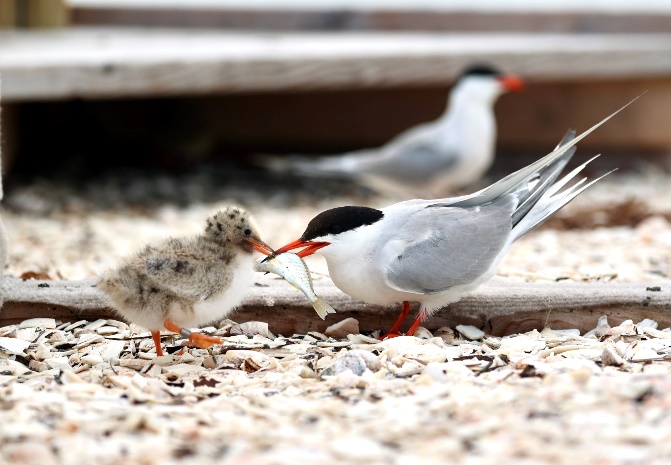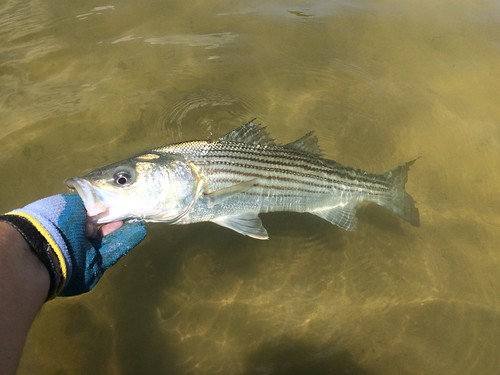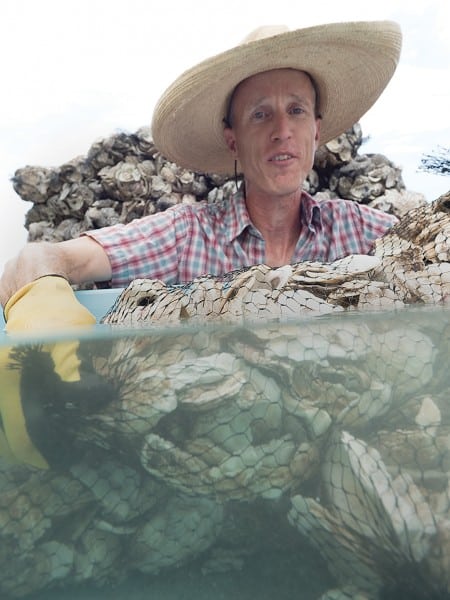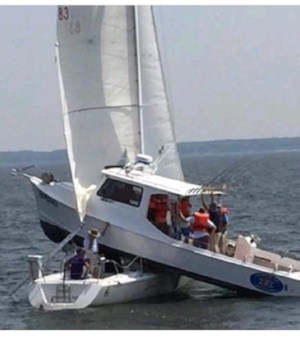A new tool to conserve endangered waterbird populations in Maryland’s Coastal Bays has proven to be a smash hit.
A floating manmade “island” built with a wood frame, the first of its kind in the region, was deployed last year as a shared project of the Maryland Department of Natural Resources (DNR), Audubon Mid-Atlantic, and Maryland Coastal Bays Program. Its purpose? To provide a nesting site for three of Maryland’s state-listed endangered waterbirds: the common tern, royal tern and black skimmer.
Bay Bulletin reported on the launch of the floating platform in August 2021. The wooden island mimics the sand flats on which the birds would lay their eggs. The structure holds features including crushed clamshells as substrate, wooden chick shelters, and even decoy birds to attract nesters.
It was created through a true team effort. Ocean City woodworkers John Collins and Todd Peterson volunteered their time and skills to design and construct the structures. Features like the shelters and decoys were assembled by local volunteer groups and community members.
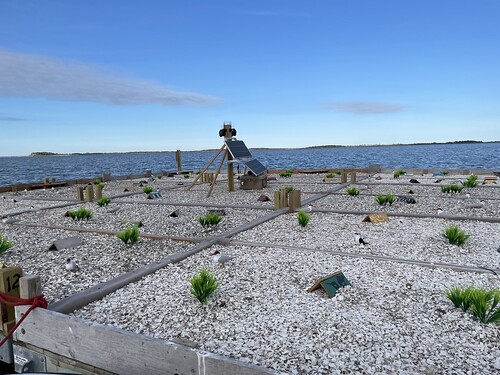
Now, Maryland Coastal Bays Program is happy to report that in 2022, the island produced the largest breeding colony of common terns in the Coastal Bays. 155 pairs of common terns nested on the platform this summer, compared to just 23 pairs in the platform’s first year, 2021.
Maryland Governor Larry Hogan applauded the group effort, saying, “This June I had the great pleasure to ride out with partners to view this island from a safe distance…Watching the birds adopt this island was an incredible experience, and offers hope for the future of these species.”
Supporting terns and black skimmers is important because they have declined by 90-95% since the mid-1980s due to sea level rise and the erosion of their natural barren sand nesting islands in the Coastal Bays.
The Maryland Coastal Bays Program made an interesting discovery. Terns from several different locations were using the nesting site. They found banded terns from Poplar Island, Hampton, Va., and Argentina. Most of the terns that found the platform in 2021 returned for 2022, which bodes well for next year’s population.
Newly-hired Archer Larned, Ph.D., Coastal Bird Habitat Coordinator, whose position is funded by US Wind, kept a close eye on the activity at the island. ”We monitored the platform through the breeding season. Remote cameras installed on the platform showed common terns roosting initially in April. Nesting activity began shortly after and the numbers demonstrate the success of the project.”
DNR’s Dave Brinker has been monitoring colonial nesting waterbird populations since 1985 and he calls the artificial breeding habitat a “temporary solution”. Brinker says, “In order to fully recover and sustain populations of terns and skimmers in the coastal bays it is essential that we restore and maintain former sand islands that have been lost to erosion. To achieve that we will need a long-term strategy that allocates locally dredged sand for island restoration.”
Until that happens, he says, the manmade habitat is critical to maintaining the population.
The platform has been safely returned to shore until next nesting season.
-Meg Walburn Viviano

